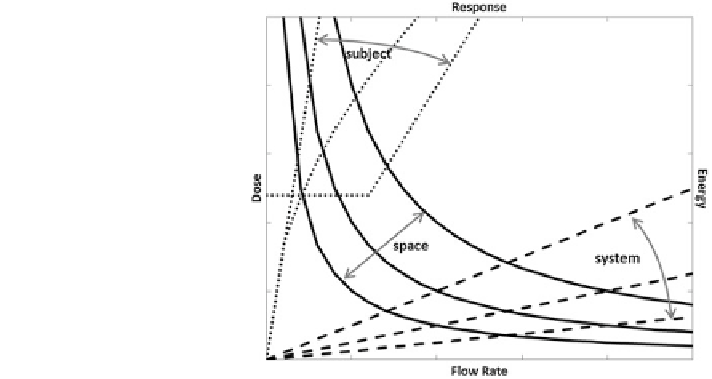Civil Engineering Reference
In-Depth Information
concentrations of the pollutants in the indoor air, namely ventilation and air
cleaning, can and should be adopted. Even if such concerns are not applicable, the
emissions of a large array of sources, such as materials and household products,
can be significantly reduced, but not eliminated. Adequate ventilation and/or air
cleaning are therefore indispensable in any risk management scheme (Bluyssen
2009
). Although alarms are the final fail safe, adequate ventilation and/or air
cleaning will also provide sufficient redundancy in case unexpected sources occur.
The rest of the chapter will only focus on ventilation.
Due to the broad range of pollutants and sources that can manifest themselves
in indoor environments, proposing universal or general sizing rules for ventilation
is an ambitious goal. This is clearly reflected by the number of different perfor-
mance criteria proposed in ventilation standards (CEN
1998
,
2007
,
2009
) and the
large spread in observed ventilation rates applied in Europe (Dimitroulopoulou
2012
). In general, minimal ventilation rates of about 0.5 ACH are recommended
for houses, about 1 ACH for occupied area of an office space and about 0.1 ACH
for low-polluted unoccupied spaces.
Provided clean air is available, the risk of adverse airborne exposure effects is
best mitigated by large volumes of fresh air. In most climates, however, main-
taining thermal comfort indoor within acceptable limits associates the indoor
environment with an energy cost, introducing a trade-off in ventilation sizing (Tian
et al.
2011
; Zhang et al.
2011a
). For any level of risk, a corresponding investment
of energy has to be accepted (Laverge and Janssens
2010
). In the total risk-energy
trade-off, a number of modifying factors are present, concentrated in three media:
the ventilation system, the indoor space and the occupant, summarized in the
scheme shown in Fig.
1
.
Fig. 1 The energy-response
relation is influenced by
system, space and subject
parameters and possesses and
inherent trade-off

